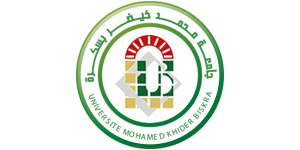Application Of Electrical Resistivity Tomography (ert) For Understanding Bedrock Environments And Imaging Groundwater Contamination Zone In Burkina Faso West African Sahel
Résumé: In Burkina Faso, the quality of groundwater is increasingly threatened by both anthropogenic and natural factors, posing a significant challenge for the country. This degradation is particularly concerning in rural areas, where the abandonment of boreholes is observed, and a failure rate of 40% for drilling operations has been noted, compromising the water access rate of 80% set for 2015, which has still not been achieved. Agriculture, livestock farming, mining, and industry are the primary activities influencing water quality in the study area. In the Sissili region, groundwater is often found in weathered layers and follows preferential pathways such as fractures. Therefore, the chemical composition of these waters is strongly related to the mineralogy of the parent rock and weathering processes, yet the structural complexity of aquifers remains poorly understood. The distance between a water point and the contamination source, as well as the depth of the superficial aquifer, are two crucial criteria for determining contamination. This study aims to map the aquifers and identify contaminated areas. To achieve this, a geoelectrical method was applied using 10 electrical panels around polluted boreholes, over distances ranging from 360 to 720 meters depending on the locations. Through a finite difference algorithm and least squares inversion, this technique allows for visualizing resistivity variations, revealing contaminated zones in our case at depths of 10 to 20 meters, primarily in the second geological layer. It is sensitive to influencing properties such as electrical conductivity and helps identify pockets of contaminated groundwater. In non-contaminated areas, the first layer appears to act as a filter. The results obtained provide a better understanding of basement aquifers, which is essential for more effective water resource management.
Mots-clès:
Publié dans la revue: LARHYSS Journal
Nos services universitaires et académiques
Thèses-Algérie vous propose ses divers services d’édition: mise en page, révision, correction, traduction, analyse du plagiat, ainsi que la réalisation des supports graphiques et de présentation (Slideshows).
Obtenez dès à présent et en toute facilité votre devis gratuit et une estimation de la durée de réalisation et bénéficiez d'une qualité de travail irréprochable et d'un temps de livraison imbattable!


